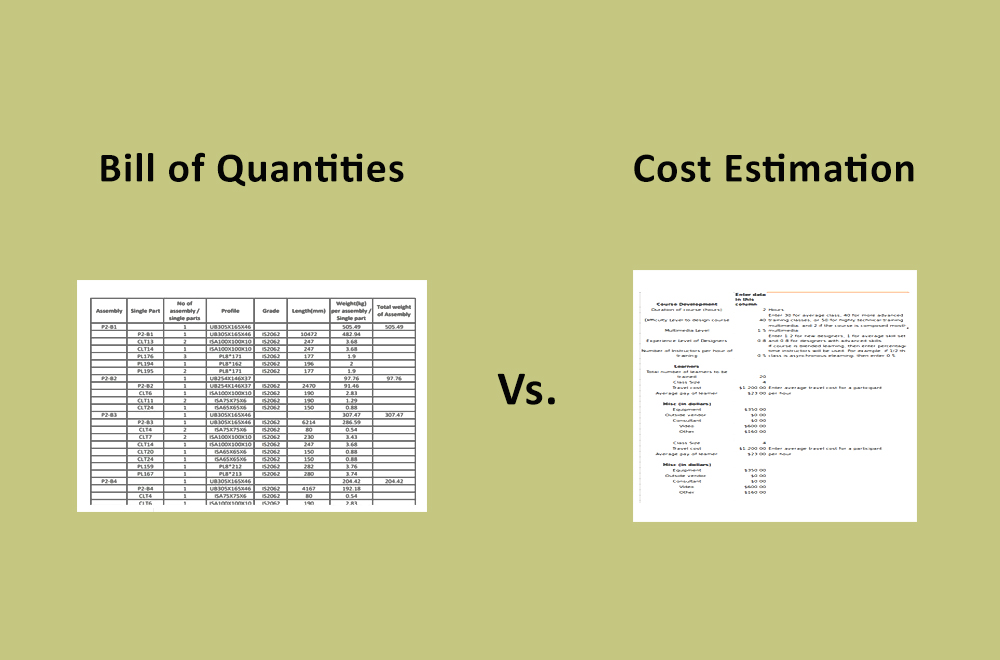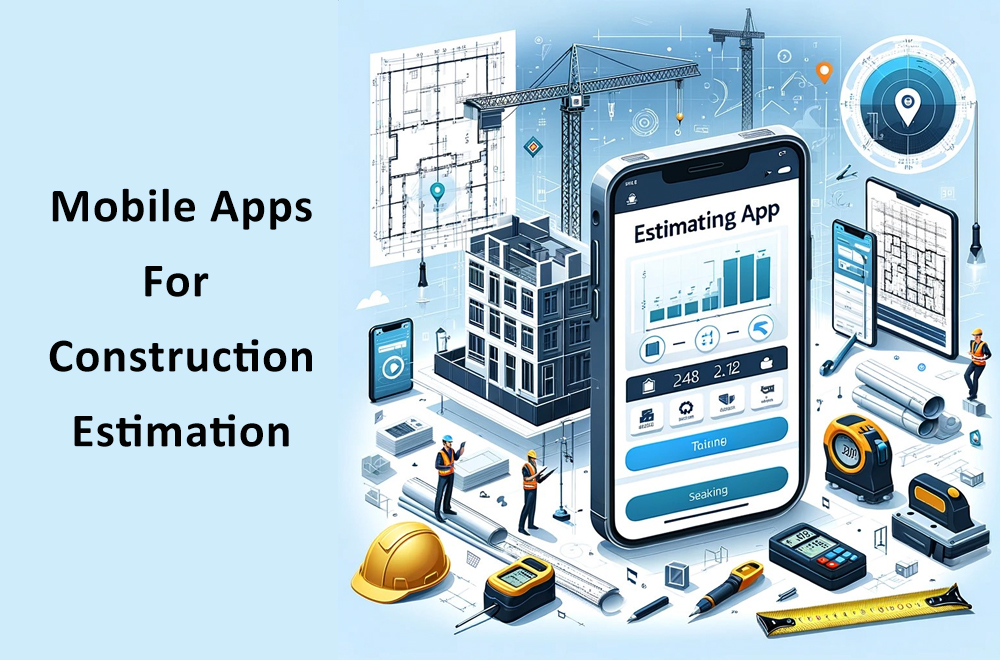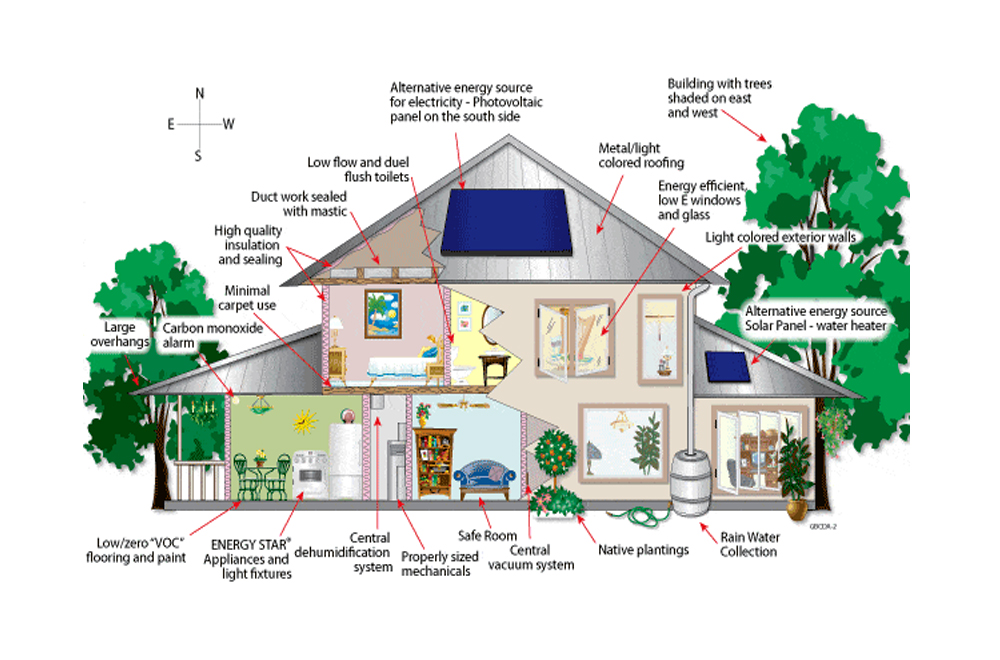Bill of Quantities (BoQs) and cost estimates are pillars in shaping the trajectory of construction projects. They orchestrate project clarity, ensuring alignment among stakeholders regarding the scope of work, material, labor required, costs, and timelines.
BoQs offers a meticulous breakdown, guidance in tender preparation, and project tracking. At the same time, cost estimates predict the comprehensive project cost, helping with budget decisions and proactive cost management. Together, they form the backbone of construction planning, guaranteeing a unified vision and strategic execution for project success.
Construction cost management involves meticulous planning, assessment, and control of expenses throughout a project’s lifecycle. A well-structured budget prevents financial overruns and enables precise resource allocation, fostering efficiency and timely project completion. As the foundation upon which successful projects are built, project budgeting demands a comprehensive approach.
Table of Contents
ToggleWhat is a Bill of Quantities (BoQ)?
The BoQ is a comprehensive document outlining the quantities and costs of materials, labor, and other elements required for a construction project. Its primary purpose is to provide a detailed inventory, serving as a roadmap for project execution. In other words, A Bill of quantities is an itemized list of construction elements that help with cost estimation.
Breaking down the BoQ anatomy:
- Item number
- Part Description
- Unit of product measurement
- Cost analysis of the project
- Quantity
- Rate
The significance of itemized quantities, detailed specifications, and accurate dimensions cannot be overstated.
Role in Quantity Surveying and Construction Contracts
Integral to quantity surveying, the bill of quantities (BoQ) helps assess the precise quantities of materials needed. Quantity surveyors leverage this document to estimate costs accurately, mitigating the risk of overruns and ensuring that projects remain within budgetary constraints.
The BoQ is pivotal in construction contracts, serving as a reference point for contractors and clients. Its detailed breakdown facilitates transparent communication, minimizes disputes, and fosters a collaborative project environment. It intricately lists materials, labor requirements, and precise quantities used by contractors during tender preparation. Project managers leverage BoQs to track progress meticulously, identify potential issues, and ensure seamless project execution.
Quantity Takeoff Process
The quantity takeoff process, a crucial step in generating the bill of quantities (BoQ), involves meticulously examining project plans and specifications. Quantity surveyors extract and quantify all relevant components, laying the groundwork for precise cost estimation.
Cost Estimation in Construction
Construction cost estimation is the process of predicting all the costs associated with a construction project but it does not typically include as much detail as a BoQ. It involves assessing various elements, including labor, materials, equipment, overhead, and contingencies. Cost estimating helps with planning, profit margins, resource management, and scheduling, allowing stakeholders to make informed decisions. It can also be used to decide on a job’s feasibility, calculate a bid, or create a project’s budget.
Key Components
- Material: It includes the pricing of construction materials required to complete the project and transportation and delivery charges.
- Labor: It involves forecasting the expenses associated with the workforce, such as the cost of workers’ wages, benefits, and taxes. A precise understanding of these components ensures an accurate projection of overall project costs.
- Equipment: The cost of all the equipment, including the cost of rental or purchase, transportation, and delivery.
- Overhead: It involves overhead expenses associated with the project, such as office space, utilities, and insurance.
- Contingencies: A contingency fund covers any unforeseen costs during the project.
Use of Estimating Software in Modern Construction
Modern construction embraces technological advancements even AI, and estimating software such as Planswift, Bluebeam, and Xactimate plays a pivotal role in enhancing accuracy and efficiency. These tools streamline the estimation process by offering real-time data, reducing errors, and providing a platform for collaborative decision-making among project stakeholders.
Link to Project Budgeting
The symbiotic relationship between cost estimation and project budgeting is undeniable. Accurate cost estimates become the building blocks of a robust project budget. By aligning these processes, construction professionals can establish realistic budgets, fostering a proactive approach to resource allocation and financial control.
Differences Between BoQ and Cost Estimation
While the Bill of Quantities (BoQ) and cost estimation contribute to project cost management, they differ in scope. The BoQ is a comprehensive document that provides a detailed breakdown of quantities and costs, offering a granular view of the project’s needs.
On the other hand, cost estimation serves as a preliminary assessment, offering an early projection of potential expenses. It provides a high-level overview, allowing stakeholders to gauge the financial landscape before the detailed breakdown offered by the BoQ.
Variances in Approach and Application
The approaches to bill of quantities (BoQ) and cost estimation differ significantly. BoQ relies on quantity takeoffs and specific project details to generate a comprehensive breakdown. While also data-driven, cost estimation focuses on broader projections based on historical data, market trends, and initial project specifications.
These differences in approach and application have implications for project management. BoQ, with its detailed nature, becomes a critical reference during construction. Cost estimation, being a preliminary tool, guides initial budgeting decisions. Understanding these distinctions is vital for effective project planning, risk mitigation, and overall success.
Project Budgeting Distinctions: BoQ vs. Cost Estimation
Role of BoQ in Project Budgeting
The Bill of Quantities (BoQ) is pivotal as a detailed blueprint for project budgeting. It is the foundation for precise financial planning, offering a comprehensive breakdown of quantities and costs. The BoQ guides project managers in allocating resources accurately, ensuring that each aspect of the construction process is accounted for in the budgeting phase.
Cost Estimation’s Contribution to Initial Budget Planning
While the BoQ provides a detailed breakdown, cost estimation contributes to the initial stages of budget planning. It offers a preliminary assessment, allowing stakeholders to gauge the financial landscape before the detailed bill of quantities (BoQ) is prepared. Cost estimation acts as a strategic tool in the early phases of project budgeting, providing a foundational understanding of potential costs.
Integrating Both for Effective Project Budget Management
Effective project budget management necessitates the seamless integration of BoQ and cost estimation. The detailed insights the BoQ provides, and the broader projections from cost estimation create a comprehensive budgeting strategy. Integrating these components ensures that project budgets are accurate and flexible enough to accommodate unforeseen changes, fostering financial control throughout the project lifecycle.
Tools and Techniques for Construction Pricing
Cost-Breakdown Structure (CBS)
The Cost Breakdown Structure (CBS) is a fundamental tool in construction pricing. This hierarchical decomposition of project costs provides a systematic and organized view of expenses. The CBS enhances transparency by categorizing prices into manageable levels, facilitating effective cost control and decision-making.
Resource Allocation Strategies
Strategic resource allocation is paramount in construction pricing. Allocating resources judiciously based on project requirements, timelines, and budget constraints is essential for optimizing efficiency. Successful resource allocation minimizes waste, maximizes productivity, and ensures that each aspect of the project receives the necessary attention.
Value Engineering in Construction Projects
Value engineering is a proactive approach to construction pricing. It involves optimizing project functions to achieve the desired outcomes at the lowest possible cost. By identifying cost-effective alternatives without compromising quality, value engineering aligns with the principles of cost control, contributing to efficient construction pricing strategies.
Best Practices for Material Cost Analysis
- Granular Supplier Evaluation: Conduct a thorough analysis of potential suppliers, considering factors such as reliability, quality, and pricing. Establishing solid relationships with reliable suppliers contributes to accurate material cost assessments.
- Regular Market Research: Stay informed about market trends and fluctuations in material prices. Traditional market research allows for proactive decision-making, helping to anticipate and mitigate potential cost increases.
- Digital Tools Utilization: Leverage digital tools and software for material cost analysis. These tools streamline the process and provide real-time data, ensuring that cost assessments are based on the most current market conditions.
Strategies for a Precise Labor Cost Estimation
- Skill-Based Labor Allocation: Tailor labor cost estimates to the specific skill sets required for each phase of the project. This approach ensures that labor costs are aligned with the complexity of tasks, preventing overestimation or underestimation.
- Consideration of Local Factors: Factor in local labor market conditions, including wage rates, availability of skilled labor, and any regional labor regulations. This localized approach enhances the accuracy of labor cost estimations.
- Historical Data Analysis: Analyze historical project data to identify patterns and trends in labor costs. This data-driven approach enhances the precision of labor cost estimations by learning from past experiences and adapting to current project requirements.
Conclusion
The bill of quantities (BoQ) serves as a meticulous roadmap, offering a detailed breakdown of quantities and costs essential for effective project execution. On the other hand, cost estimation provides an early assessment, allowing stakeholders to gauge the financial landscape and make informed decisions in the project’s initial stages.






